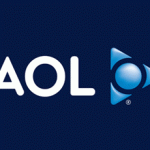 San Francisco — Click fraud, a looming threat to the highly profitable pay-per-click search advertising business, surged significantly to a new high 17.1% in the last quarter of 2008 versus 16.6% a year earlier, thanks to scammers’ hacking and sophisticated use of botnets, according to stats released Wednesday by Click Forensics.
San Francisco — Click fraud, a looming threat to the highly profitable pay-per-click search advertising business, surged significantly to a new high 17.1% in the last quarter of 2008 versus 16.6% a year earlier, thanks to scammers’ hacking and sophisticated use of botnets, according to stats released Wednesday by Click Forensics.
Austin, Texas-based Click Forensics, that analyzes Internet traffic, reported that 17.1 percent of clicks on online advertising were frauds evidently intended solely to drive up bills for businesses paying “per click.” The increment represents the highest level recorded since the company began tracking rates in 2006.
According to Click Forensics CEO Tom Cuthbert, three components added to the growth: First, brands continue providing more dollars into PPC campaigns; second, there has been a reemergence of click firms, and third, the economic downturn has prompted a rise in cybercrime and a jump in botnet activity.
“Google, Yahoo and others are acting in view of that to protect advertisers, but this is an arms race,” Cuthbert said, calling for more industry cooperation to monitor activity. “We are at the early stages of identifying these issues, and unfortunately it will only get worse.”
The Interactive Advertising Bureau has been making advances in determining click measurement guidelines. The Click Quality Council also continues to address the issues, but both need to work together. “It will take industry cooperation to address the issues at a better clip than what we are doing now,” Cuthbert said.
The average click fraud rate for PPC ads across major sites like AdSense and Yahoo Publisher Network hit 28.2%, down from 28.3% in 4Q07.
31.4% of all click fraud traffic took place from botnets, up from 2007’s 22% and 28% from 3Q08. And in December last, the highest percentages of click fraud originating from outside the US included Canada (7.4%), Germany (3%) and China (2.3%).
“It was a big jump. It is something advertisers should be watching. Search ad providers should be concerned as well,” he said.
Cuthbert also pointed to the resurgence of click farms.
Cuthbert said he also has started to see click farms reemerge, and suggests advertisers pay close attention to these threats and others as online search and PPC ads continue to support companies moving marketing dollars online.
Click fraud occurs when someone clicks on a pay-per-click (PPC) ad with malicious objective or by mistake. For example, a competitor may click on a rival’s PPC ads in order to drive up their ad spending. Also, a publisher may click on PPC ads on its site to trigger more commissions. Click fraud also includes non-malicious activity that nonetheless yields a click of little or no value to the advertiser, such as when someone clicks on an ad by mistake or two consecutive times.
He added that additional “industry cooperation” is necessary to lower click fraud rates. Last year search giant Google partnered with Click Forensics to maximize click quality reports in its pay-per-click campaign tracking.
Click Forensics generates its quarterly click-fraud incidence report using its Click Fraud Index, which gathers data from more than 4,500 online advertisers and agencies that use ad services from all major search engines.


